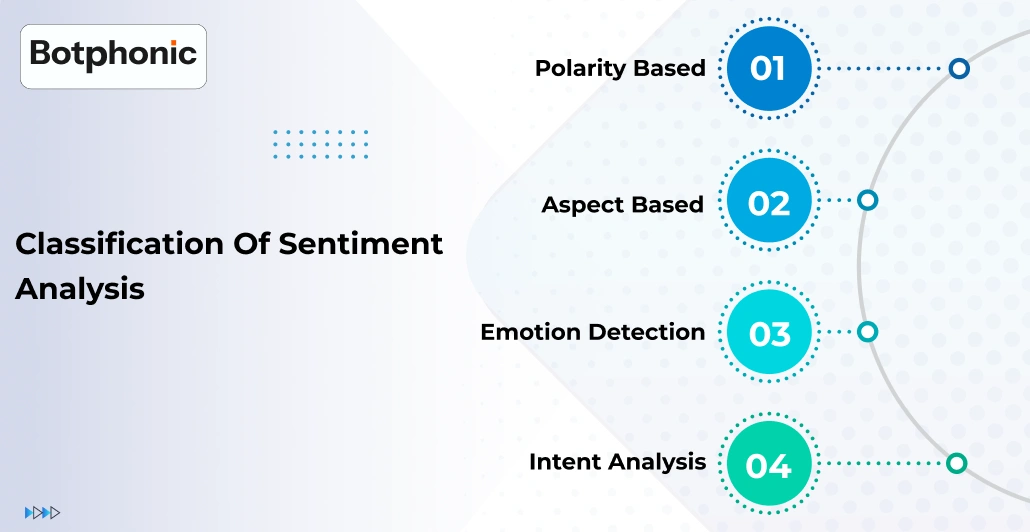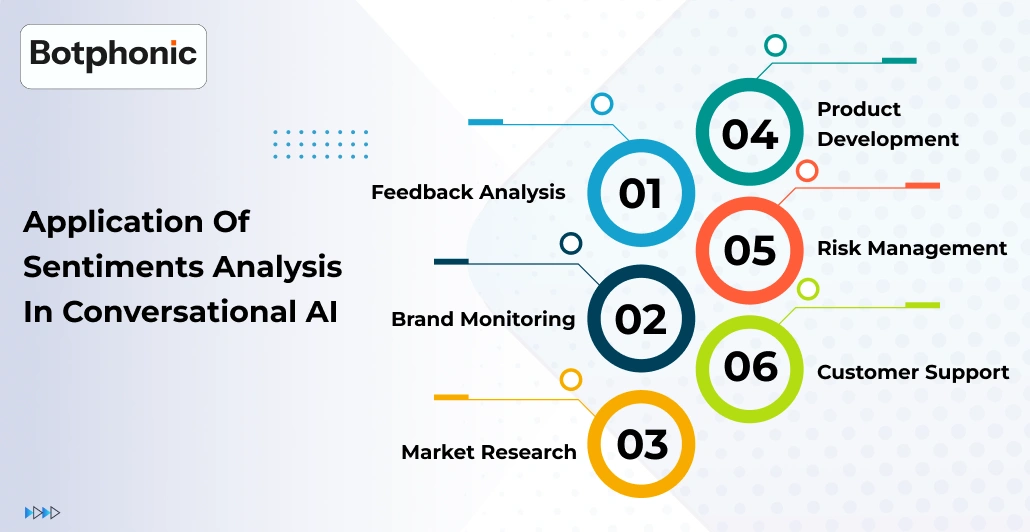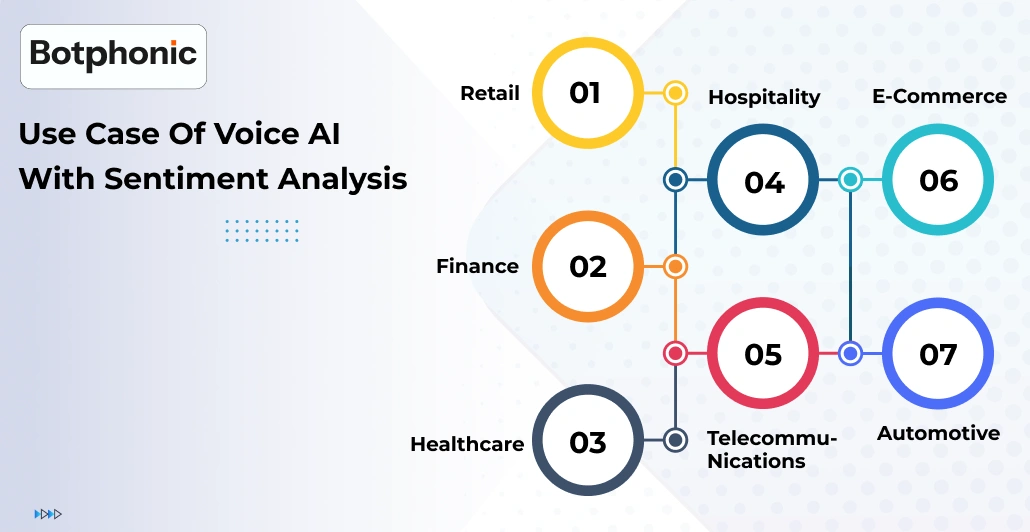
Summarize Content With:
Summary
Customers may speak with words but their loyalty lies in their emotions. That’s where voice AI with sentiment analysis can turn your conversations into accurate business insights. Let’s uncover the power of understanding sentiments for your business.
Introduction
In today’s customer centric world it’s not about listening to what customers say, instead businesses need to understand how they feel. Emotions hidden behind the conversation can bring loyalty, purchase and long term relationship with customers. Voice AI with sentiment analysis is a useful tool in this situation.
Unlike the previous text based sentiment analysis tools, it taps directly into spoken interaction assessing tone, pace and emotion to understand customer behaviour. Backed by advanced AI technologies, it classifies sentiments into positive, negative and neutral even at the time of high volume of calls.
Sentiment analysis combined with voice AI is revolutionizing a number of sectors, including healthcare. As we head towards the end of 2025, the question is not whether businesses should use conversational AI with sentiment analysis. It should be how fast AI customer service should harness its potential? Let’s get you a response.
What do you mean by sentiment analysis?
The process of sentiment analysis can also be called as opinion mining employs natural language processing along with machine learning. This combination facilitates analyzing and interpreting emotions behind textual data.
At the very first step it assesses the data and decides if it’s positive, negative or neutral. Analyzing this will help enterprises to gain an idea of public opinion, trends, insights and brand reputation to make the best decisions.
Classification of sentiment analysis

There are various different types of sentiment analysis. Sentiment analysis based on polarity aids in determining the tone, whether it be neutral, negative, or positive. While aspect based analysis can help decide sentiments related to particular attributes from the text.
1. Polarity based
One of the most common methods to detect the sentiment is polarity based. Here, it is immediately categorized as either neutral, negative, or positive. In this method the overall sentiment of text is determined without diving deep into attributes or aspects.
For example: In the customer review, this method will give AI an idea if the review is praising the product or criticizing it.
Employing advanced sentiment analysis tools for advanced analytics and Machine learning facilities processing a vast amount of data. Later using predictive analysis to understand customer reaction and provide appropriate response.
2. Aspect based
Aspect based sentiment analysis goes beyond considering overall emotions rather it identifies sentiments corresponding to particular attributes in a text. A product review can help you know the sentiments behind usability, performance and design of a product.
This deep analysis helps you understand the user preferences and their pain points. Hence it helps businesses to develop products and services accordingly.
By using AI Call Assistant along with sentimental analysis, companies can automate the process of aspect based sentiment detection leading to personalized responses for customers.
3. Emotion detection
As per name suggests emotion detection helps you classify sentiments into emotions like joy, sadness, anger, frustration and more. Unlike the polarity based, this type of analysis helps understand the emotions that drive sentiment.
This type of analysis can be majorly helpful when you want to understand the satisfaction level of customers. You can implement adaptive learning in your AI so that it can become smarter with each conversation.
4. Intent analysis
Intent analysis is the process that determines the reason or intent behind any sentiment expressed. It also is far more than just categorising it as a positive or negative sentiment.
For example when looking at social media content, it is capable of identifying if the comment is feedback, complaint, inquiry or more. Hence this insight can help tailor responses.
How does voice AI perform sentiment analysis?
We all know that AI based platforms employ NLP and machine learning to understand textual data and identify sentiments.
Here’s a flow of how this process is done:
- Data collection: The data is gathered from different sources such as social media, reviews and more.
- Preprocessing: Data is then under preparation for processing. It involves removing irrelevant information, tokenization, and handling stop words.
- Feature extraction: Some relevant features are selected and extracted from data. A sentiment can be expressed by a word, phrase, or group of words.
- Sentiment classification: Machine learning is made capable of identifying sentiments into positive, negative or neutral. In order to categorize attitudes, these models are trained to identify patterns in the retrieved data.
- Evaluation: Just like others it is necessary to evaluate how efficiently sentiment analysis is working. Its accuracy, precision and other metrics are continuously under monitoring. Later it keeps on improving as per feedback.
- Deployment: After training and evaluating, it’s time to deploy sentiment analysis models. It processes the text, predicts sentiment of the user and can even help with actionable steps for better decisions.
Application of sentiments analysis in conversational AI

Here are some mainstream application of voice AI with sentiment analysis:
- Feedback analysis: Businesses employ sentiment analysis for understanding the reviews provided by customer feedback and social media posts. Hence it helps understand the room for improvement.
- Brand monitoring: It helps in tracking the mentions online and understanding how the public perceives your brand. Hence it can help enhance brand reputation by carefully responding to negative sentiments.
- Market research: It is capable of understanding market trends, sentiments of competitors, and preferences. Hence businesses can make a best action plan based on the factual data.
- Product development: Businesses use voice AI with sentiment analysis to collect user feedback for advancement of present products. Hence driving Innovation and better quality.
- Risk management: Sentiment analysis is capable of analysing risks by monitoring sentiments of people involved, even stakeholders. Hence it can help take steps for avoiding risks.
- Customer support: Customer service is one of the greatest and most advantageous uses. Businesses are capable of providing personalized help and address issues promptly through sentiment analysis.
These applications might help you understand how AI powered sentiment analysis can be valuable for your business.
Upgrade listening into understanding—experience Botphonic now.
Book a free demoBenefits of empowering your voice AI with sentiment analysis
AI with sentiment analysis is a huge step towards better customer experience. It enhances various business operations and provides plenty of benefits.
Here are some of its main benefits:
- Better decision making: It helps making accurate decisions through the data.
- Elevated customer experience: Helps you respond quickly and appropriately to the customer demands.
- Reputation management: Can sense and detect negative responses quickly to take necessary steps.
- Saves costs and time: Can automate the analysis of sentiments and help you save time with resources.
- Ahead of competition: It helps your business adopt all modern trends early. You can therefore outperform the competition.
- Marketing: It can even help you decide the best content and offering for marketing.
- Lesser risk: Can help you sense the upcoming risks and compliance problems. Hence providing proactive management.
Voice AI with sentiment analysis powers your business to excel in all the fields from customer service, competition and operations.
Use case of voice AI with sentiment analysis

AI powered sentiment analysis is helpful in prospering various industries including:
- Retail: Understanding customer reviews to develop better products and provide a great shopping experience.
- Finance: Take careful investment decisions and avoid risks through monitoring the market.
- Healthcare: Elevating the care quality and patient satisfaction by considering their feedback.
- Hospitality: Understanding guest feedback and further improving guest experience and safety.
- Telecommunications: Analyzing customer sentiments for addressing problems and better service offering.
- E-commerce: Developing a marketing strategy as per customer reviews and interactions.
- Automotive: Advancement in the design of products and its features by analyzing sentiments.
These use cases help you understand the versatile nature of voice AI with sentiment analysis. It further leads to exceptional customer service and better business outcomes.
Conclusion
Voice AI with sentiment analysis has surely been a transformative source for businesses. It can provide some valuable insights that lead to happy customers and progressive business. With sentiment analysis in auto voice dialer software you are aware of market trends, customer emotions and how they perceive your brand.
Your company can make wise decisions and obtain a competitive edge by utilizing sentiment analysis and sophisticated procedures.
Botphonic AI plays an essential role by providing your business with an advanced AI call assistant empowered with sentiment analysis. Our exceptional conversational AI is equipped with machine learning and natural language processing to interpret and analyze data and extract the sentiments behind it.

